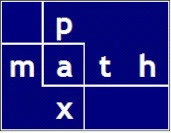See original hand calculation PDF
I decided to check (verify) the calculation set using the same approach as the original engineer — except using Python, Sympy, and Jupyter — and then compare those results with RISA 3D.
I present the problem diagram.

My Jupyter Notebook
I followed the same method as the original engineer, used the same engineering parameters. There is one difference: the original engineer worked by hand, I worked using Python, Sympy, and Jupyter.
Notice that this structure is not a true determinate truss. Had there been a diagonal in the center bay, it would have been a truss). Therefore, our structure is indeterminate and cannot be solved using statics alone. However, our problem can be solved using a classical work/energy approach.
For further insight into determinacy in structural analysis, here are two links:
The method used is from a theorem by Alberto Castigliano published in 1873 (his dissertation!):
The redundant reaction components of a statically indeterminate structure are such as to make the internal work (strain energy) a minimum.
References for Castigliano’s work:
I notice that the original engineer obtained a value of 1.549 kips axial load in each of the two posts whereas I calculated a value of 1.0713 kips.
According to RISA, the axial force in each of the two posts was 1.0723 kips. RISA uses more exact values for the member moments of inertia and areas. My answer was 1.0723 kips when I used the more exact member properties. In the RISA model, I toggled off the following:
- the shear deformation option
- the P-Delta option
- the AISC code stiffness reduction, since we are only seeking the model loads rather than a code capacity
My assessment is that the original engineer set up the virtual work problem perfectly (Page 1) including all the calculus equations (Page 2) but then made an arithmetical error or errors getting to the final answer.
And here’s a PDF of my RISA model and results.
Conclusion
This post illustrates a few points:
- hand methods are quite powerful (even in 2023)
- a computer algebra system (CAS) can help eliminate arithmetic errors
- hand methods (or CAS) can provide verification of RISA models
- hand methods (or CAS) can provide closed-form solutions
- hand methods can provide formulaic insight into the various effects of member geometry and member stiffness
My Jupyter notebook with all-variable integrals

